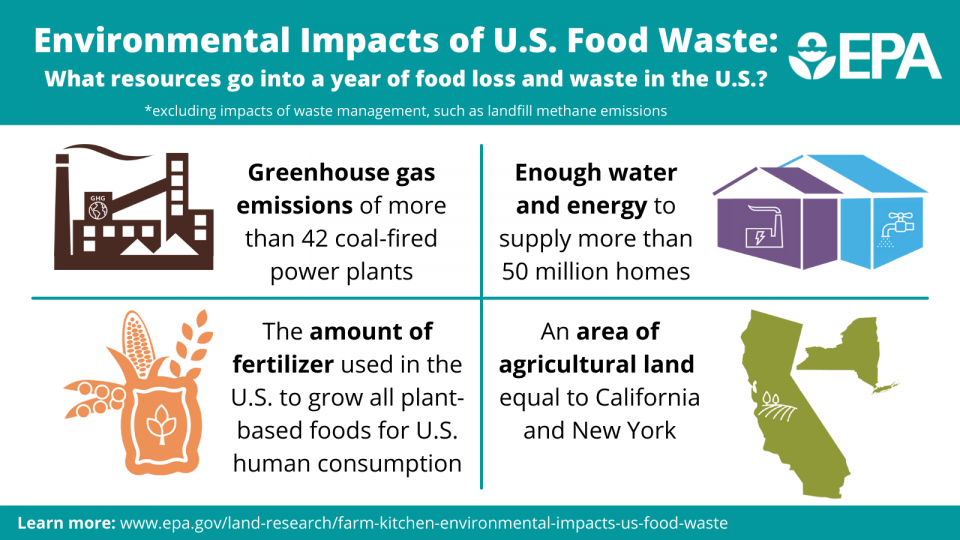
On November 30, 2021, the US Environmental Protection Agency (EPA) released a new report entitled “From Farm to Kitchen: The Environmental Impacts of U.S. Food Waste (Part 1).”
This report reveals the climate and environmental impacts of producing, processing, distributing, and retailing food that is ultimately wasted and projects the environmental benefits of meeting the US goal to prevent 50 percent of food waste by 2030. The report was prepared to inform domestic policymakers, researchers, and the public, and focuses primarily on five inputs to the US cradle-to-consumer food supply chain — agricultural land use, water use, application of pesticides and fertilizers, and energy use — plus one environmental impact — greenhouse gas emissions.
This report provides estimates of the environmental footprint of current levels of food loss and waste to assist stakeholders in clearly communicating the significance; decision-making among competing environmental priorities; and designing tailored reduction strategies that maximize environmental benefits. The report also identifies key knowledge gaps where new research could improve our understanding of US food loss and waste and help shape successful strategies to reduce its environmental impact.
The new report reveals that each year, the resources attributed to US food loss and waste are equivalent to:
- 140 million acres agricultural land – an area the size of California and New York combined;
- 5.9 trillion gallons blue water – equal to the annual water use of 50 million American homes;
- 778 million pounds pesticides;
- 14 billion pounds fertilizer – enough to grow all the plant-based foods produced each year in the United States for domestic consumption;
- 664 billion kWh energy – enough to power more than 50 million US homes for a year; and
- 170 million MTCO2e greenhouse gas emissions (excluding landfill emissions) – equal to the annual CO2 emissions of 42 coal-fired power plants
In short, significant resources go into growing, processing, packaging, storing, and distributing food. Thus, the most important action we can take to reduce the environmental impacts of uneaten food is to prevent that food from becoming waste in the first place.
A companion report, “The Environmental Impacts of U.S. Food Waste: Part 2,” will examine and compare the environmental impacts of a range of management pathways for food waste, such as landfilling, composting, and anaerobic digestion. EPA plans to complete and release this second report in Spring 2022. Together, these two reports will encompass the net environmental footprint of US food loss and waste.
Read the full report at https://www.epa.gov/system/files/documents/2021-11/from-farm-to-kitchen-the-environmental-impacts-of-u.s.-food-waste_508-tagged.pdf. (PDF document, 113 pages)
For questions, contact Shannon Kenny, Senior Advisor, Food Loss and Food Waste, US EPA Office of Research and Development.
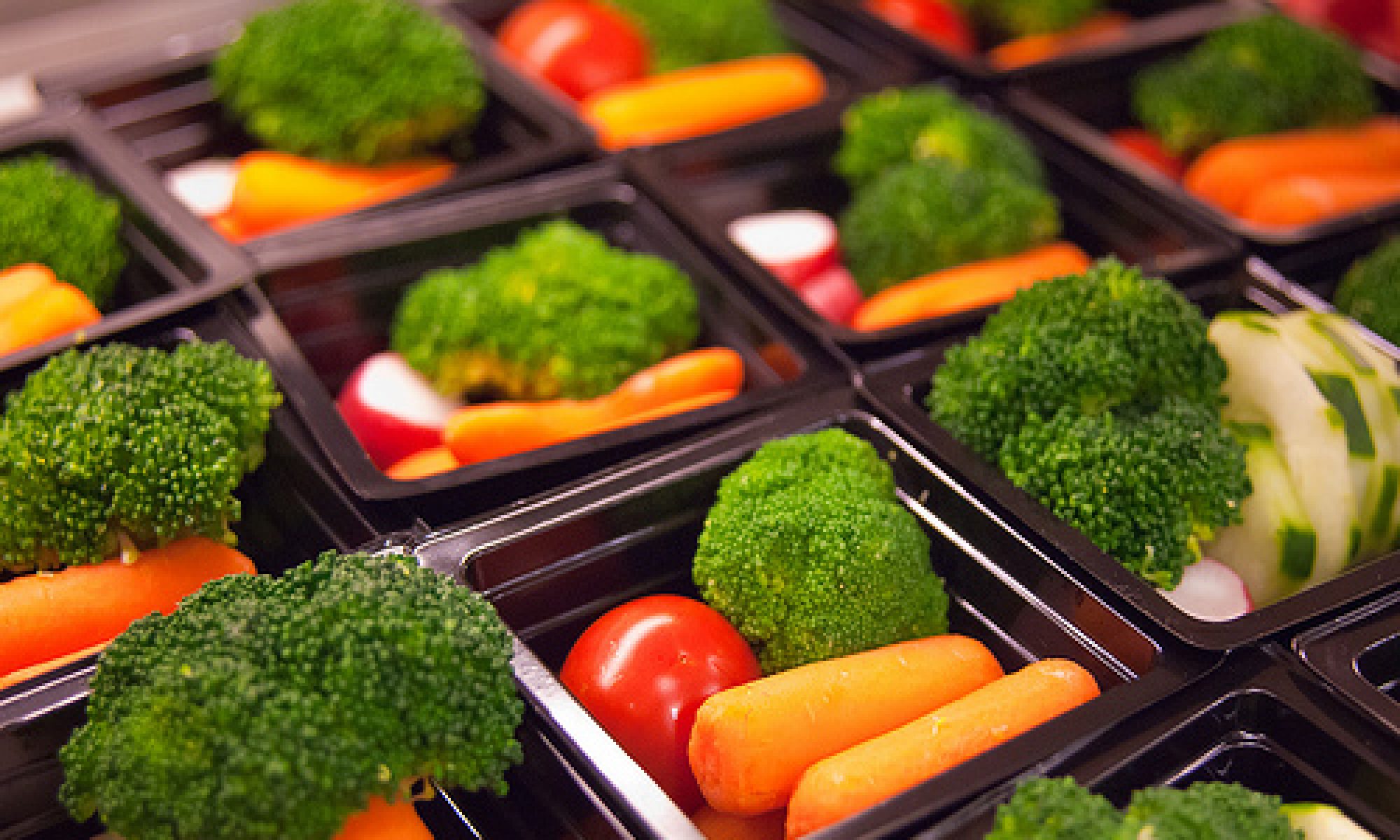


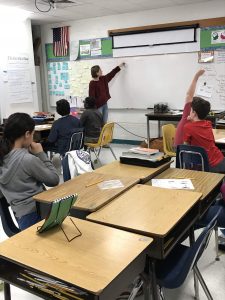 Amanda Price piloted the unit in two fifth grade science classes at Butler Elementary and Sandburg Elementary February-March 2020. Both schools are located in Springfield, IL. Amanda works as a Graduate Public Service Intern (GPSI) in the offices of Environmental Education and Community Relations at Illinois EPA. The
Amanda Price piloted the unit in two fifth grade science classes at Butler Elementary and Sandburg Elementary February-March 2020. Both schools are located in Springfield, IL. Amanda works as a Graduate Public Service Intern (GPSI) in the offices of Environmental Education and Community Relations at Illinois EPA. The 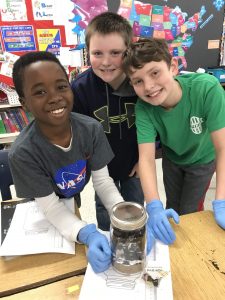 driven by student questions. It teaches students the importance of food waste reduction, landfill diversion, and composting as part of a circular food system. Students create “landfills in a jar” with materials given to them with the goal of protecting the sand, or “groundwater,” at the bottom of the jar. Students also create “compost in a jar” using fresh food scraps and other compostable materials. Students monitor their jars throughout the unit and record scientific data such as temperature and mass. They learn how bacteria act as decomposers. The unit also incorporates map-reading and asks students to think critically about the pros and cons of choosing space for new landfill construction.
driven by student questions. It teaches students the importance of food waste reduction, landfill diversion, and composting as part of a circular food system. Students create “landfills in a jar” with materials given to them with the goal of protecting the sand, or “groundwater,” at the bottom of the jar. Students also create “compost in a jar” using fresh food scraps and other compostable materials. Students monitor their jars throughout the unit and record scientific data such as temperature and mass. They learn how bacteria act as decomposers. The unit also incorporates map-reading and asks students to think critically about the pros and cons of choosing space for new landfill construction.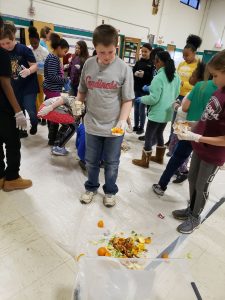 The main hands-on activity in the unit is a food waste audit, which can be performed at various scales. Students use data from the audit to calculate the estimated food wasted per person, during the school year, etc. Students end the unit by creating a community awareness or action plan to inform their community or advocate for change. A few students at Butler Elementary wrote a letter to the principal asking him to install a clock in the cafeteria so students could track how much time they had to eat. The principal took swift action and ordered the clock.
The main hands-on activity in the unit is a food waste audit, which can be performed at various scales. Students use data from the audit to calculate the estimated food wasted per person, during the school year, etc. Students end the unit by creating a community awareness or action plan to inform their community or advocate for change. A few students at Butler Elementary wrote a letter to the principal asking him to install a clock in the cafeteria so students could track how much time they had to eat. The principal took swift action and ordered the clock.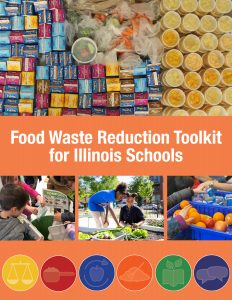 What’s the problem with food waste in schools?
What’s the problem with food waste in schools?